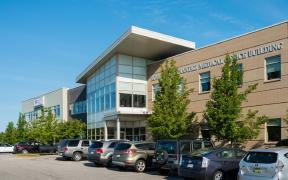What is radiofrequency ablation?
Radiofrequency ablation is a procedure to treat Barrett's esophagus. Doctors remove damaged and diseased tissue from the esophagus during an endoscopy.
- Heat energy is applied to diseased tissue during endoscopy.
- The damaged tissue is treated without hurting the healthy tissue.
- Within two to three days, the damaged tissue is shed and replaced by healthy tissue growth.
Ablations are done without being admitted to the hospital and can be repeated until the diseased tissue is completely gone. Ask your doctor how many treatments you should expect to receive.
How is radiofrequency ablation done?
- Doctors use a catheter to direct an endoscope down the patient’s throat.
- Doctors attach the ablation tool to the end, which uses radio frequency and heat technology to removed damaged tissue.
- The procedure takes about 30 minutes.
What should I expect after a radiofrequency ablation procedure?
After the procedure, doctors will give patients medication to help with discomfort from the endoscope. The diseased tissue should fall off after 48 to 72 hours of receiving an ablation.
Patients may experience chest and swallowing discomfort. Doctors may give patients medication to treat the discomfort. Though ablation is considered low risk, patients could have infections, narrowed esophagus or minor bleeding.
- Patients will continue treatment every eight weeks until their doctor has removed all diseased tissue.
- Doctors will check patient progress 12 months later by performing an endoscopy and biopsy.
- Patients will have a modified diet after their procedure.


























